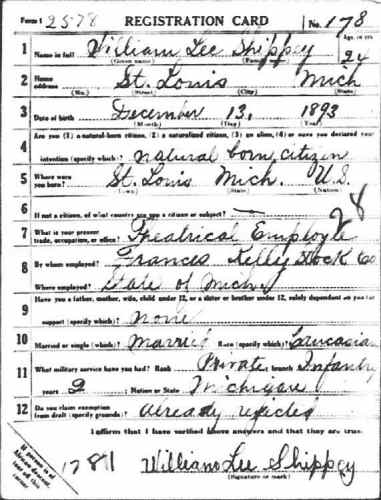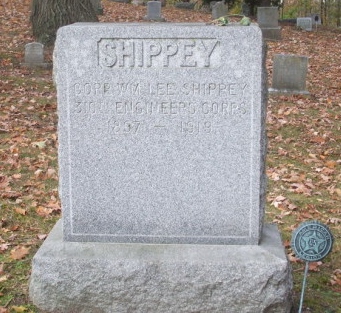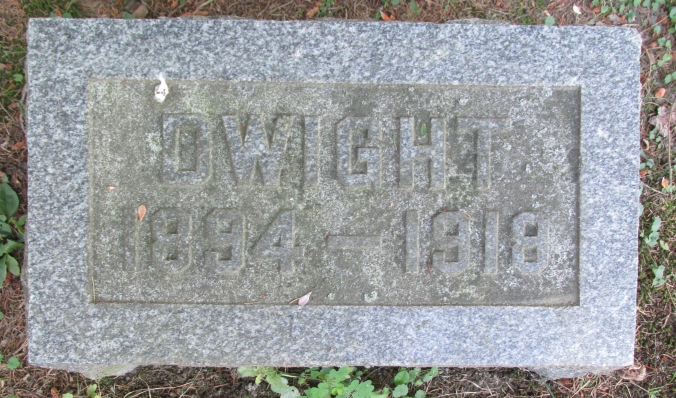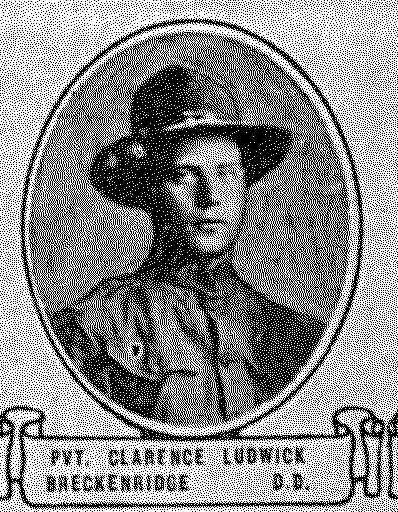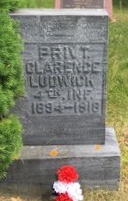


Above: Agnes Yutzey’s YMCA portrait; Yutzey’s application for a passport; staff picture from Ithaca Schools, taken prior to volunteering to work with the YMCA.
Author’s note: The following article first appeared in the December 6, 2018 issue of the Gratiot County Herald.
During World War I, over 13,000 volunteers went to France and England to serve in the Young Men’s Christian Association (YMCA). It was a favorite place for American soldiers, offering them a place to eat, relax, read and write home.
Agnes Yutzey, who lived near Middleton, was one of the many volunteers who left her job and went to Europe. During her youth, Yutzey’s parents moved so that she and her two sisters could attend school in Ithaca. A graduate of Central Michigan Normal School, she returned to Ithaca as a teacher before volunteering to head to Europe for the YMCA.
In 1918, crossing the Atlantic could take a ship as much as three weeks during the war. While on board a vessel, Agnes attempted to pass her time by going for walks, sunning in deck chairs and by trying to keep her food down. Regarding her stomach, she wrote in a letter that some days “the fish won this contest” and she struggled because she did not possess good “sea legs.” However, Yutzey enjoyed serving coffee and tea to soldiers who were onboard.
Agnes Yutzey’s dream was to make it to France. However, the YMCA sent her to Liverpool, England. She served there for 2 ½ months in the Liverpool Canteen where she worked at 46 Lord Street. Her work involved running a cash desk (checkout) for men who bought food cafeteria style, along with operating a reading room, talking to homesick soldiers and chaperoning those who wanted to see an English play. Yutzey discovered that the average soldier that came to her canteen expected one thing: cream and sugar in their coffee.
In letters home, she asked Ithaca readers to send her current magazines so that soldiers had new reading material. Occasionally there was an English citizen who walked into the canteen and said that they wanted to meet a real American. Although she initially stayed in a hotel, a local citizen invited Yutzey to live with her in Liverpool. During this time the Influenza Epidemic raged through England, although Yutzey never became sick. Surprisingly, she did have the good fortune of meeting another Ithaca girl at the Liverpool canteen.
After a while, Agnes Yutzey eventually made it to the European continent where she worked at YMCA Canteen Number 27 in Coblenz and Number 14 in Trier, Germany. Yutzey’s service ended in August 1919, and she came home aboard the SS Mobile from Brest, France.
She returned to live briefly with her parents in New Haven Township before moving to Cedar Falls, Iowa to work at a teachers college. Yutzey next went to George Peabody College for Teachers in Nashville, Tennessee. It was there in 1921 that she married James Atkinson, Jr., and moved to Clearwater, Florida where she taught until 1940.
Agnes Yutzey, a YMCA volunteer, passed away in March 1950.
Eldon Helman, from New Haven Township, and Lyndsi Wolfe, Fulton High School Senior, assisted with research for this article.










